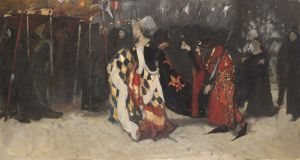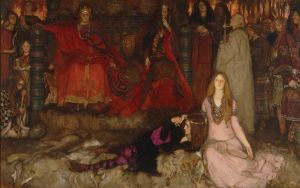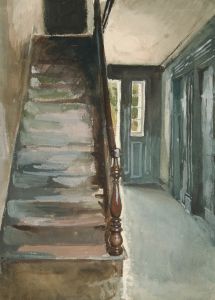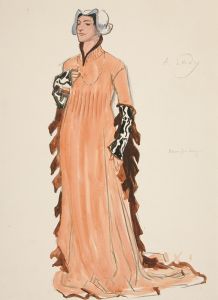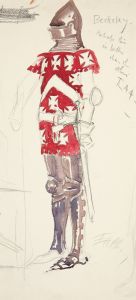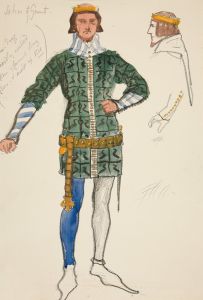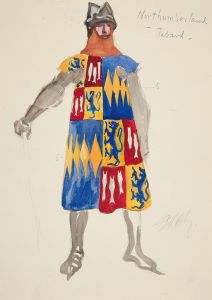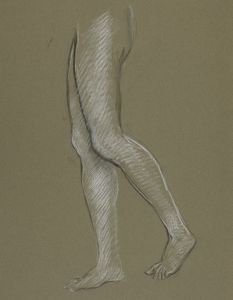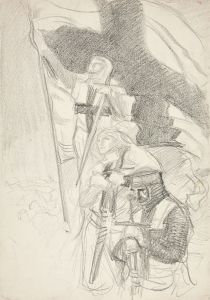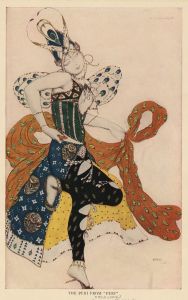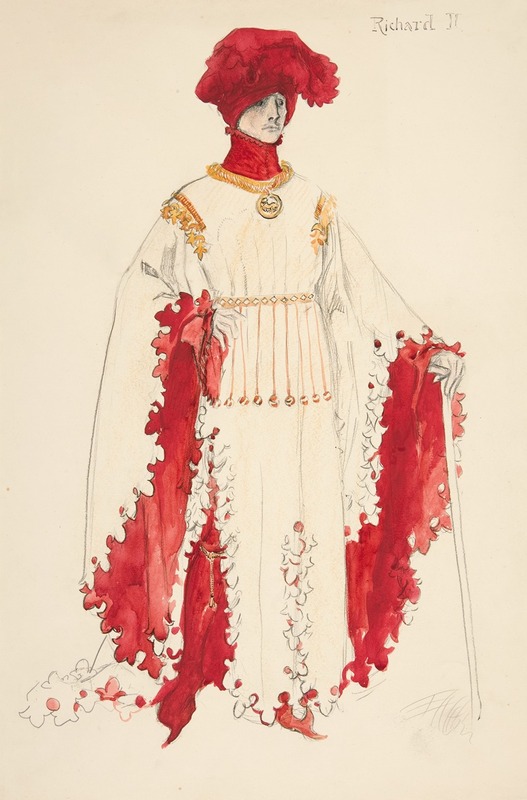
Richard II , costume sketch for Henry Irving’s 1898 Planned Production of Richard II
A hand-painted replica of Edwin Austin Abbey’s masterpiece Richard II , costume sketch for Henry Irving’s 1898 Planned Production of Richard II, meticulously crafted by professional artists to capture the true essence of the original. Each piece is created with museum-quality canvas and rare mineral pigments, carefully painted by experienced artists with delicate brushstrokes and rich, layered colors to perfectly recreate the texture of the original artwork. Unlike machine-printed reproductions, this hand-painted version brings the painting to life, infused with the artist’s emotions and skill in every stroke. Whether for personal collection or home decoration, it instantly elevates the artistic atmosphere of any space.
The artwork titled Richard II, Costume Sketch for Henry Irving’s 1898 Planned Production of Richard II was created by Edwin Austin Abbey, an American artist and illustrator known for his historical and literary-themed works. This particular sketch was part of Abbey's contributions to the theatrical world, specifically for a proposed production of William Shakespeare's play Richard II by the renowned English actor-manager Sir Henry Irving. Although the production was planned for 1898, it ultimately never came to fruition.
Edwin Austin Abbey was widely recognized for his meticulous attention to historical detail, and this costume sketch reflects his dedication to authenticity and artistic precision. The drawing depicts a costume design intended for the character of Richard II, the titular monarch in Shakespeare's historical play. Abbey's work demonstrates his ability to capture the opulence and regal bearing associated with the late 14th-century English court, aligning with the historical period in which the play is set. The sketch likely served as a visual guide for the production's costume designers, ensuring that the garments would reflect the grandeur and complexity of the era.
Henry Irving, one of the most celebrated actors and theatrical producers of the Victorian era, was known for his ambitious and elaborate Shakespearean productions. His collaboration with Abbey on this project underscores Irving's commitment to high-quality stagecraft and his interest in working with prominent artists of the time. However, despite the preparatory work undertaken by Abbey and others, Irving's production of Richard II was never staged, and the reasons for this remain unclear in historical records.
The costume sketch is now appreciated as a standalone piece of art, showcasing Abbey's skill in combining historical research with artistic creativity. It also serves as a testament to the collaborative efforts between visual artists and theatrical practitioners during the late 19th century. Today, the sketch is often studied as part of Abbey's broader body of work and as an example of the intersection between fine art and theater in the Victorian period.
No further details about the specific circumstances of the production's cancellation or the subsequent use of Abbey's designs are available.





